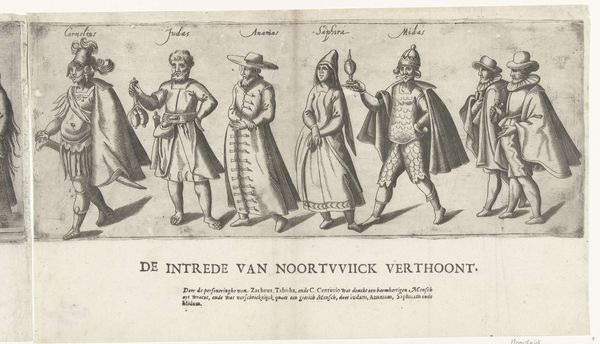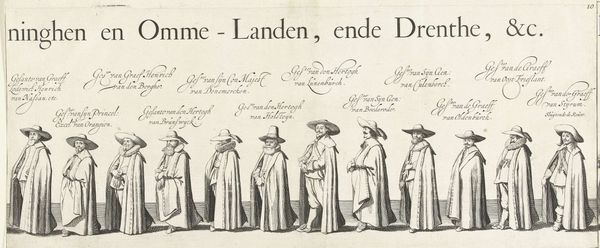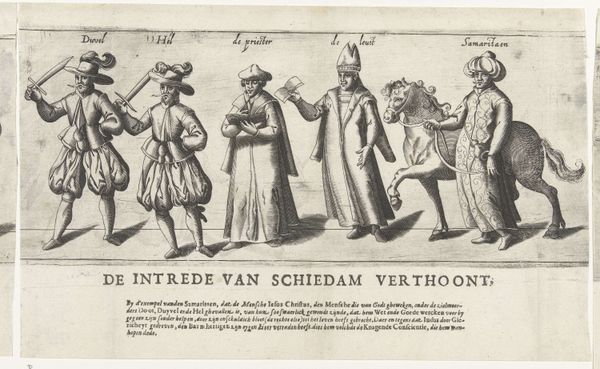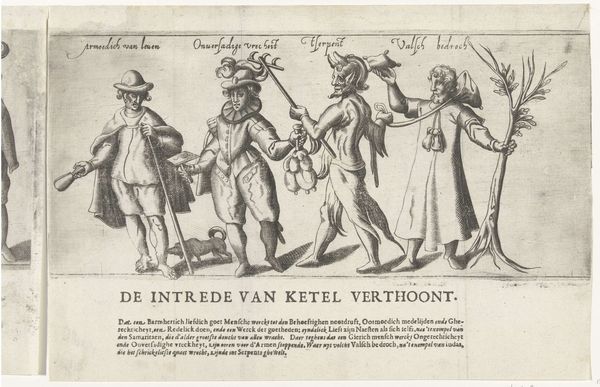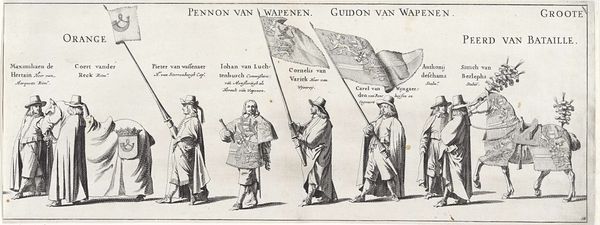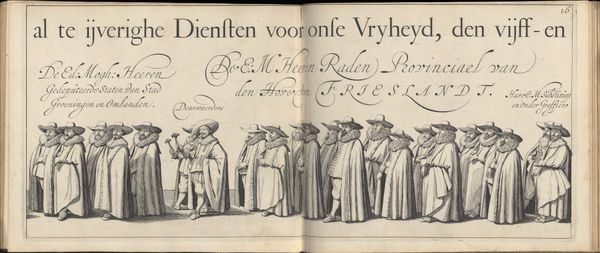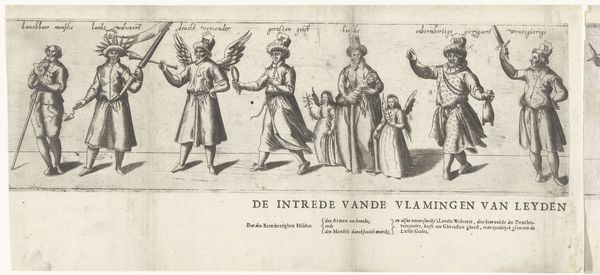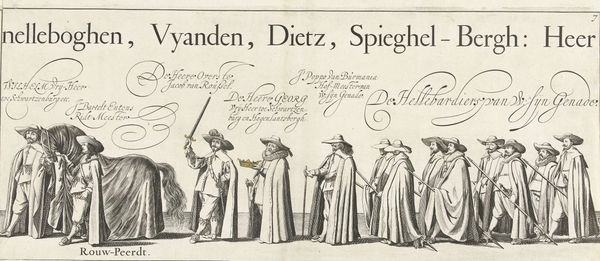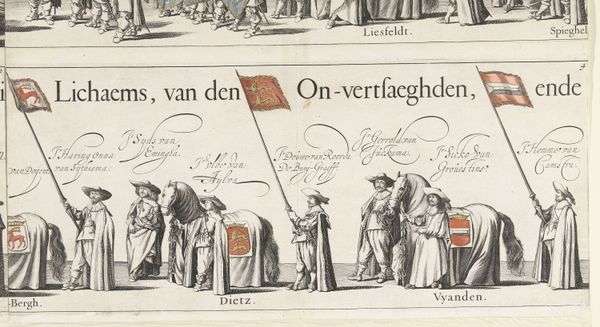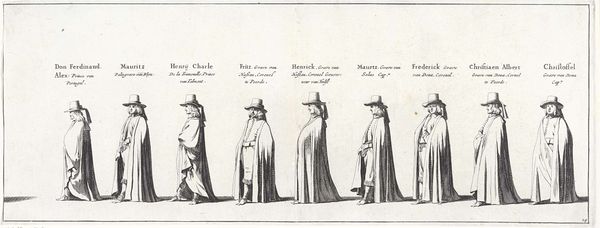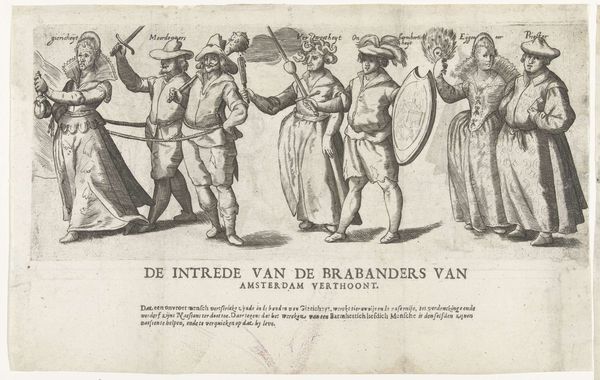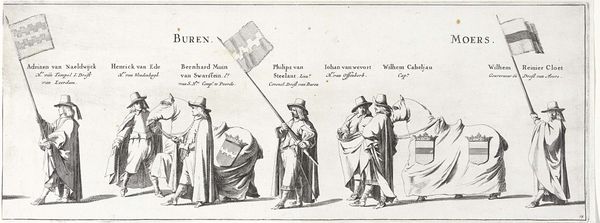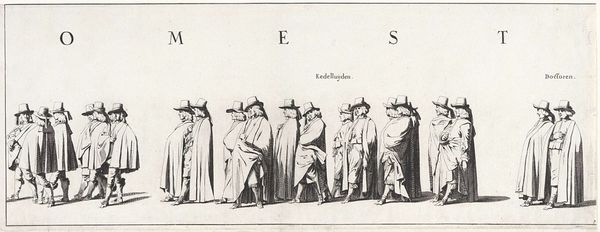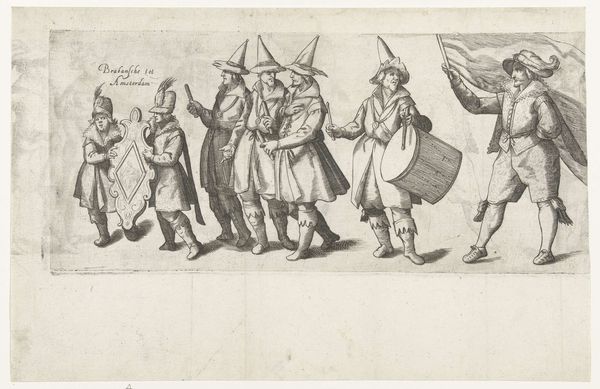
De begrafenisstoet van Frederik Hendrik (plaat nr. 27), 1647 1647 - 1651
0:00
0:00
print, engraving
#
portrait
#
aged paper
#
light pencil work
#
quirky sketch
#
baroque
#
dutch-golden-age
# print
#
sketch book
#
figuration
#
personal sketchbook
#
sketchwork
#
pen-ink sketch
#
line
#
sketchbook drawing
#
history-painting
#
storyboard and sketchbook work
#
sketchbook art
#
engraving
Dimensions: height 211 mm, width 546 mm
Copyright: Rijks Museum: Open Domain
Editor: Here we have Pieter Nolpe’s “The Funeral Procession of Frederik Hendrik, plate 27,” dating from 1647 to 1651. It’s an engraving. There's something haunting about this march of figures, a somber and repetitive quality. What visual elements stand out to you in this print? Curator: Observe the rigid structure. The artist utilizes line to create a rhythmic pattern through repetition. Note the deployment of chiaroscuro, the stark contrast of light and shadow which serve not to illustrate, but to formalize, heightening the emotional austerity and unifying the collective figures. Editor: So, the figures themselves are less important than the pattern they create? Curator: Precisely. It is the orchestration of form that evokes feeling. How do the variations in line weight and density contribute? Consider how the formal components supersede narrative concerns, and explore the way space is not a void but is treated with purpose and creates unity of affect. Editor: The way the hats create almost another line across the top does draw your eye and contain the forms underneath. It’s interesting to see a historical scene approached with such an emphasis on abstract composition. Curator: Indeed. The composition encourages contemplation not of the event depicted but of the nature of representation itself. This is Baroque form distilled to its essence. Consider how this piece engages with notions of symmetry, balance, and unity. What do these things tell you about how meaning might function? Editor: Thinking about the relationship between form and content really sheds new light on this piece. Curator: By understanding form and exploring the artist’s technical choices, one develops a more rigorous reading of not only the singular piece, but also its broader aesthetic values and philosophy of artmaking.
Comments
No comments
Be the first to comment and join the conversation on the ultimate creative platform.
